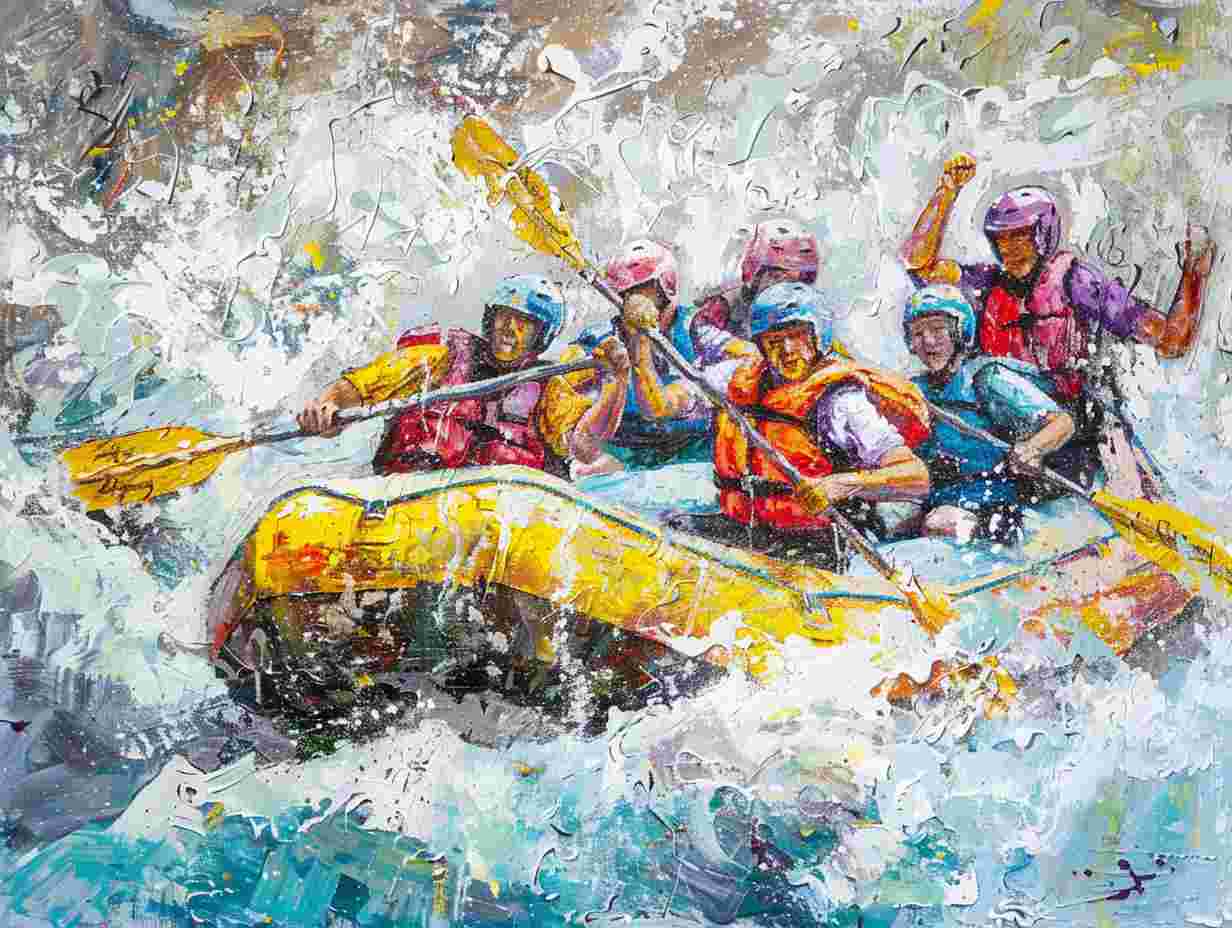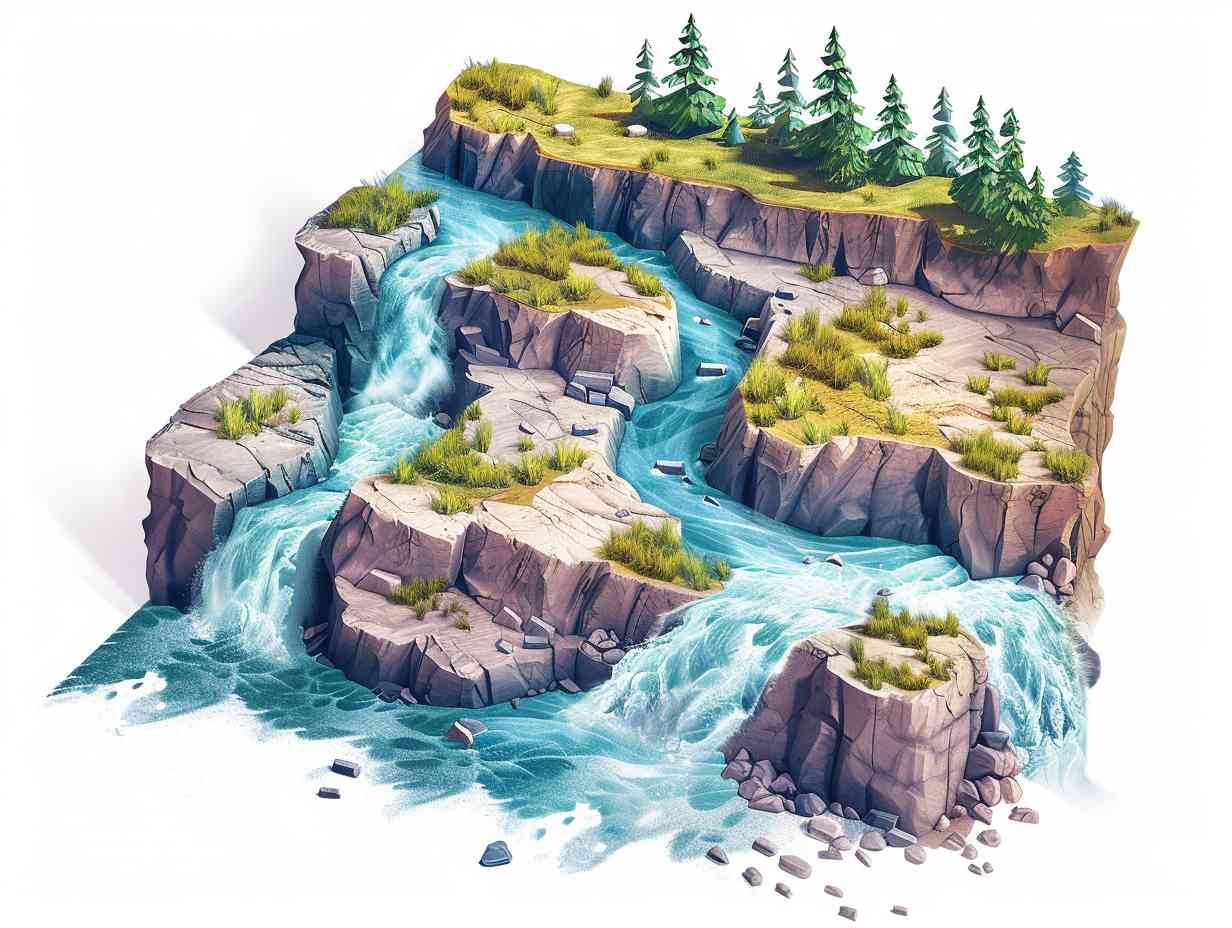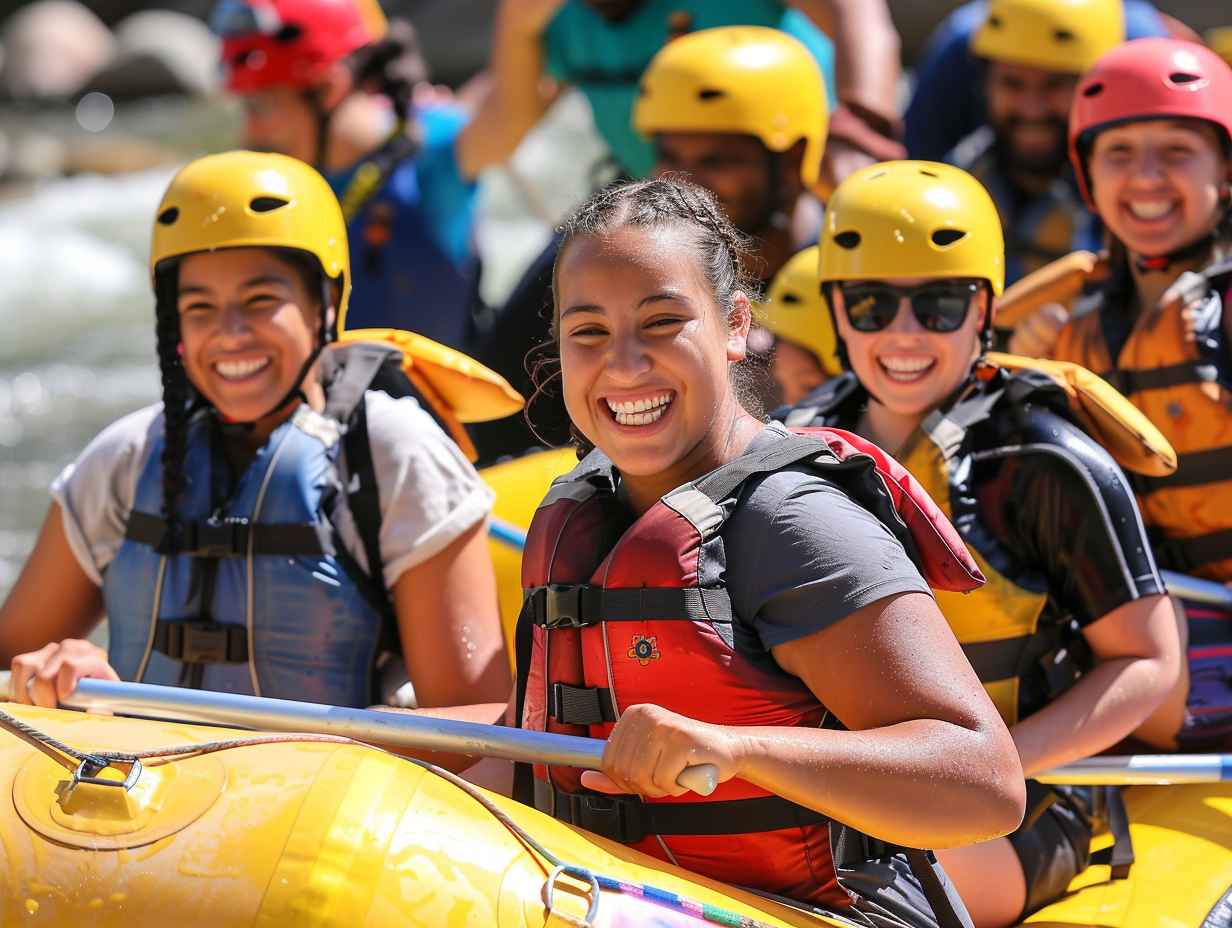
Rafting for Beginners
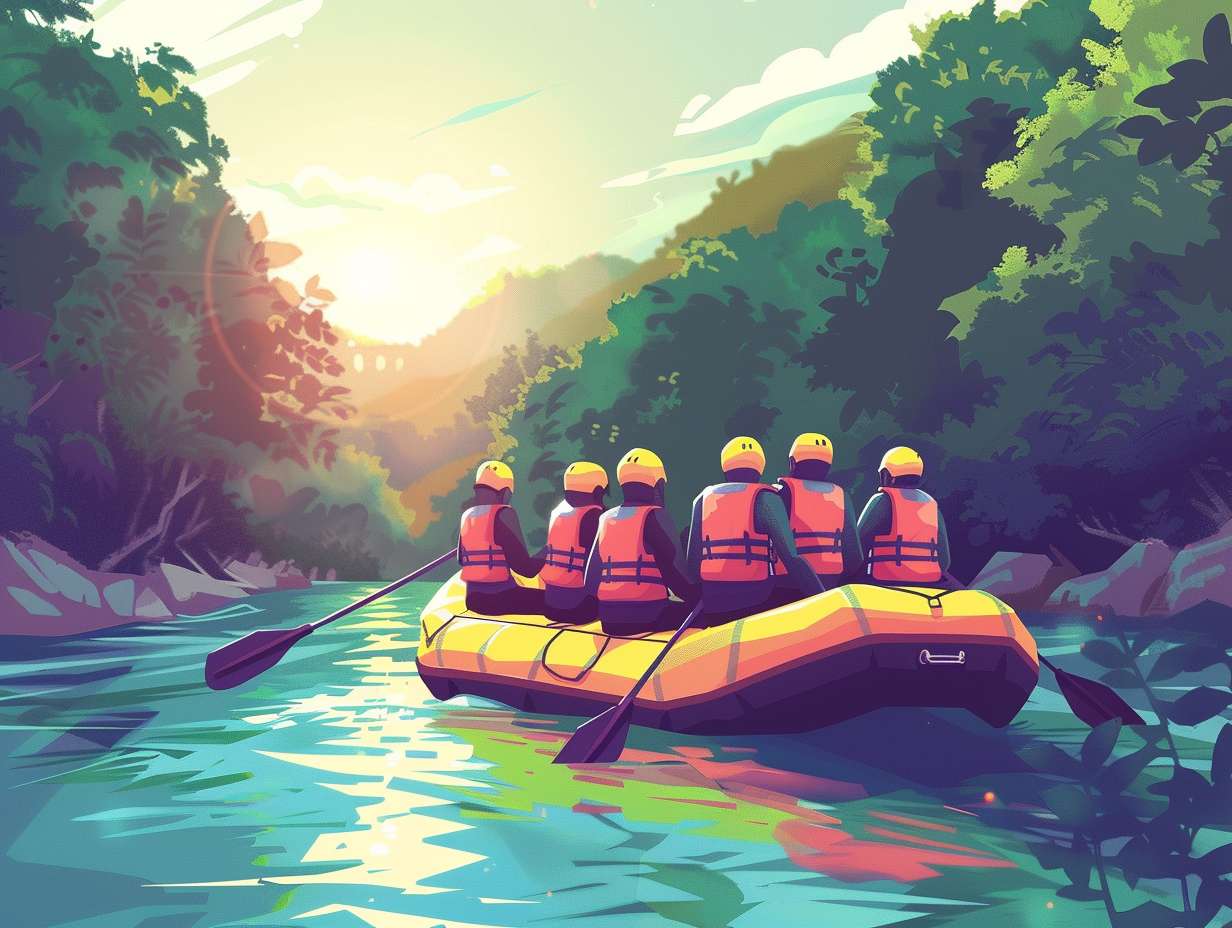
When starting on your first rafting adventure, it’s essential to equip yourself with the necessary gear, understand river classifications, prioritize safety, master basic paddling techniques, and select the right trip to suit your skill level.
But what truly sets the foundation for a successful and enjoyable experience? Let’s explore how these fundamental aspects can pave the way for an unforgettable journey on the water.
Key Takeaways
- Choose appropriate river class for skill level
- Follow safety gear and guidelines closely
- Practice basic paddling techniques for control
- Select a suitable rafting trip based on experience
Essential Gear for Rafting
When rafting, having the right gear is essential for your safety and enjoyment. A well-fitted helmet is vital to protect your head from potential impacts against rocks or the raft. Securely fastened life jackets are a necessity, ensuring you stay afloat in case you fall into the water. Proper footwear like water shoes with good grip will help you navigate slippery surfaces and protect your feet.
Additionally, wearing quick-drying clothes and applying sunscreen will keep you comfortable throughout the adventure. It’s also advisable to bring along a dry bag to store your essentials and prevent them from getting wet. By investing in the right gear, you’ll be well-prepared for a thrilling and safe rafting experience.
Understanding River Classifications
To navigate rivers safely while rafting, understanding river classifications is essential. Rivers are classified on a scale from I to VI based on their difficulty levels. Class I rivers are the easiest, with small waves and mostly flat water, suitable for beginners.
As the classes increase, so does the difficulty, with Class V rivers presenting extreme rapids and challenging obstacles. Class VI rivers are considered unnavigable and extremely dangerous.
Before starting on a rafting trip, research the river’s classification to make it matches your skill level. Always start with easier classes and gradually progress to more challenging ones as you gain experience. Understanding river classifications will help you choose the right adventure and stay safe on the water.
Safety Tips for Beginners
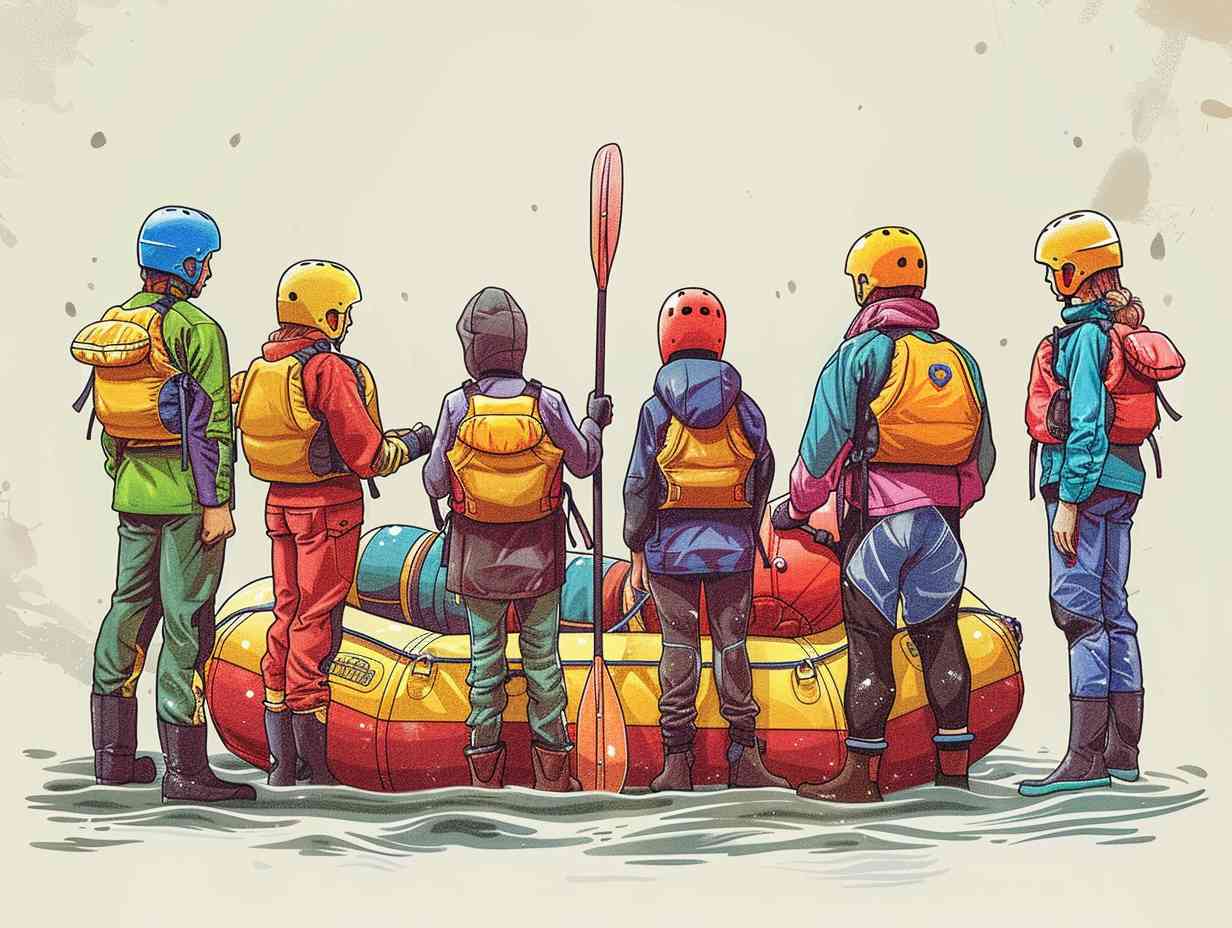
For beginners setting out on their first rafting adventure, prioritizing safety is paramount to guarantee an enjoyable experience on the water. Here are some essential safety tips to keep in mind:
| Safety Tips | Description |
|---|---|
| Wear a Life Jacket | Always wear a properly fitted life jacket to stay afloat in case of a capsize. |
| Listen to the Guide | Pay attention to the instructions given by your guide for a safe journey. |
| Stay Hydrated | Drink plenty of water to stay hydrated throughout the trip. |
| Sun Protection | Apply sunscreen and wear sunglasses to protect yourself from the sun’s rays. |
| Know Emergency Signals | Familiarize yourself with the guide’s emergency signals for quick responses. |
Basic Paddling Techniques
As you prepare for your rafting adventure, mastering basic paddling techniques will be key to maneuvering the waters safely and effectively.
The first fundamental technique to grasp is the forward stroke. This stroke involves dipping the paddle blade fully into the water near the front of the raft and pulling it back alongside the boat.
To steer the raft, you’ll need to learn the sweep stroke. With the sweep stroke, you extend the paddle out to the side of the raft and use it to carve a wide arc through the water.
It’s also essential to practice the draw stroke, which helps move the raft sideways. By honing these basic paddling techniques, you’ll feel more confident exploring the rapids on your thrilling rafting expedition.
Choosing the Right Rafting Trip

When selecting the perfect rafting trip, consider your experience level and desired level of adventure.
If you’re a beginner, opt for a calm river with mild rapids, such as a Class I or II. These trips are great for learning the basics without too much intensity.
For those seeking more excitement, intermediate trips with Class III rapids provide a good balance of challenge and fun.
Advanced rafters looking for a thrilling experience should choose trips with Class IV or V rapids, offering intense whitewater and adrenaline-pumping action.
Keep in mind the duration of the trip, as shorter excursions are available for those with time constraints, while longer trips provide a more immersive experience.
Choose wisely to ensure a rafting adventure that suits your preferences.
Frequently Asked Questions
What Are Some Common Wildlife Encounters While Rafting?
When rafting, you might encounter various wildlife such as birds, fish, and mammals like deer or bears along the riverbanks. Remember to respect their space, observe from a safe distance, and never feed them.
How Can Beginners Prepare for Unexpected Weather Conditions on the River?
Prepare for unexpected weather by checking forecasts before heading out, packing layers, waterproof gear, and extra clothes. Stay alert on the river, watch for changing conditions, and listen to your guide’s instructions for safety during any weather changes.
Are There Any Age Restrictions for Participating in Rafting Trips?
Age restrictions vary among rafting companies. The minimum age for river trips is typically around 6-8 years old, but some excursions may require participants to be older. Check with your chosen provider for specific guidelines.
What Type of Food and Drink Should I Bring on a Rafting Trip?
When rafting, bring non-perishable snacks like granola bars, nuts, and dried fruit for quick energy. Pack water or sports drinks to stay hydrated. Avoid heavy or messy foods. Remember to pack out all trash for Leave No Trace principles.
Can I Bring My Camera or Phone on the Raft for Taking Photos?
Yes, you can bring your camera or phone on the raft for taking photos. Just make sure to secure them in a waterproof case or bag to protect them from water splashes and potential damage.
Conclusion
So, now that you’ve got your gear sorted and know the basics of rafting, you’re ready to hit the water!
Remember, practice makes perfect, so don’t be afraid to get out there and make some waves.
Keep your head above water, stay afloat, and soon you’ll be steering those rapids like a pro.
The world is your oyster, so grab your paddle and make a splash!
More information about Rafting for Beginners
Affiliate information declaration: We may earn revenue from the products referred on this page and participate in affiliate programs.
